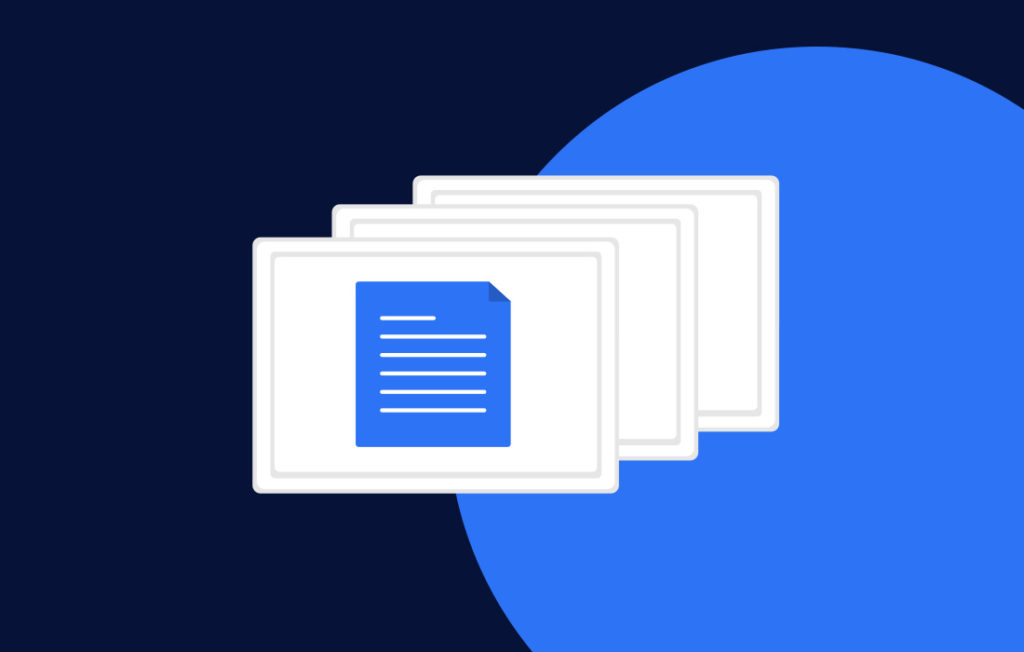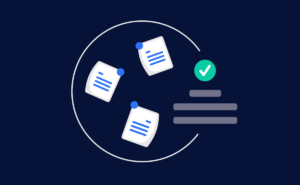What are the benefits of Intelligent Document Processing (IDP)?
- IDP Platform
- Laura Saße-Middelhoff

What is Intelligent Document Processing?
IDP is revolutionizing the way companies handle their documents. Using artificial intelligence and machine learning, IDP can extract and analyze data from a wide range of documents, including invoices, contracts and other business documents.
One of the main benefits of IDP is its ability to automate various document-related tasks. By automating the data entry and routing of documents, IDP systems can help organizations save time and reduce the risk of errors. This can increase efficiency and reduce the workload of employees, allowing them to focus on the important tasks.
Another advantage of IDP is the improvement in accuracy. By using machine learning algorithms to analyze documents, IDP systems can detect patterns and anomalies that could be overlooked by humans. This can help to reduce the risk of error and improve the accuracy of data entered into business systems.
Overall, the benefits of intelligent document processing are numerous. By automating document-related tasks, improving accuracy and helping organizations comply with regulations, Intelligent Document Processing plays a crucial role in the digital transformation of businesses.
The role of the GDPR
Artificial intelligence(AI) is rapidly transforming many industries and the General Data ProtectionRegulation (GDPR) has introduced important measures to ensure that the use of AI is compatible with the rights of individuals.
The GDPR applies to the processing of personal data, which includes the use of AI to analyze and make decisions about individuals. This means that companies using AI must ensure that they comply with the requirements of the GDPR for the collection, use and storage of personal data.
One of the most important requirements of the GDPR is the principle of transparency, which means that individuals have the right to be informed about how their personal data is being used. This is particularly important when it comes to the use of AI, as the decision-making process is not always transparent. Companies that use AI must therefore be transparent about how they use the technology and inform individuals about the decisions that are made about them.
In addition to the principle of transparency, the GDPR also requires that companies using AI have robust safeguards in place to protect the rights of individuals. This includes measures to ensure that personal data is secure and that individuals have the right to object to the processing of their data.
Overall, the General Data Protection Regulation plays an important role in regulating the use of AI in Europe. By requiring transparency and robust safeguards from companies, the GDPR helps to ensure that the use of AI is compatible with the rights of individuals.

IDP using the example of the insurance industry
Intelligent Document Processing (IDP) can help insurance companies automate various document-related processes, such as data entry, routing and document classification. By using machine learning to extract and analyze data from documents, IDP can help automate tasks that would be time-consuming and error-prone if performed manually.
For example, IDP can extract data from insurance documents such as claim forms and policies and classify these documents based on the type of insurance or claim. In this way, insurance companies can forward the documents to the appropriate department or team for further processing.
IDP can also be used to extract data from medical records and other documents related to insurance claims. By automatically extracting and analyzing this data, IDP can help insurance companies to process claims more efficiently and accurately.
Overall, the use of IDP can help insurance companies streamline their processes and improve efficiency, accuracy and compliance. By automating document-related tasks, IDP can help insurance companies save time and reduce the risk of errors, allowing them to focus on higher value tasks.
AI and the cloud
There are several reasons why the combination of artificial intelligence (AI) and the cloud is so powerful.
One reason is that cloud solutions allow companies to scale their AI efforts quickly and easily. With cloud computing, companies can access a virtually unlimited amount of computing power and storage space on demand, which is necessary for training large AI models. This allows companies to quickly develop and deploy AI applications without having to invest in expensive hardware and infrastructure.
Another reason is that cloud solutions make it easier for companies to collaborate and share data and resources for AI projects. With cloud-based AI platforms, companies can easily share data and collaborate with team members, partners and customers on projects. This can help speed up the development of AI applications and make it easier for companies to reap the benefits of AI.
Buildsimple platform
Buildsimple is a Software-as-a-Service(SaaS) offering for IDP that combines the power of the cloud with artificial intelligence. A key feature is the possibility of collaboration between users and easy access to input management functionalities. Buildsimple can be accessed via a web browser instead of being installed and maintained on individual customer computers or servers.
The use of Buildsimple offers several advantages:
- Cost savings: With SaaS, companies do not have to invest in expensive hardware and infrastructure to run software applications. Instead, Builsimple can be used in a pay-per-use model.
- Ease of use: Buildsimple is a self-service for machine learning and requires no special IT knowledge to set up and use. This makes Buildsimple a good choice for small, medium and large companies.
- Security & Compliance: Buildsimple invests in robust security measures to protect its systems and data. In addition, Buildsimple is ISO 27007-certified and can be used in regulated industries without any problems.
- Automatic updates: Buildsimple takes care of software updates and maintenance. Companies no longer have to worry about keeping their software up to date. This frees up IT staff and ensures that companies are always using the latest version of the software.
- Implementation: powerful and secure REST APIs enable easy integration of Buildsimple into local business processes.
Latest posts
Don't miss any news
Subscribe to our newsletter for the latest news, developments and functions relating to Buildsimple.
Further contributions





